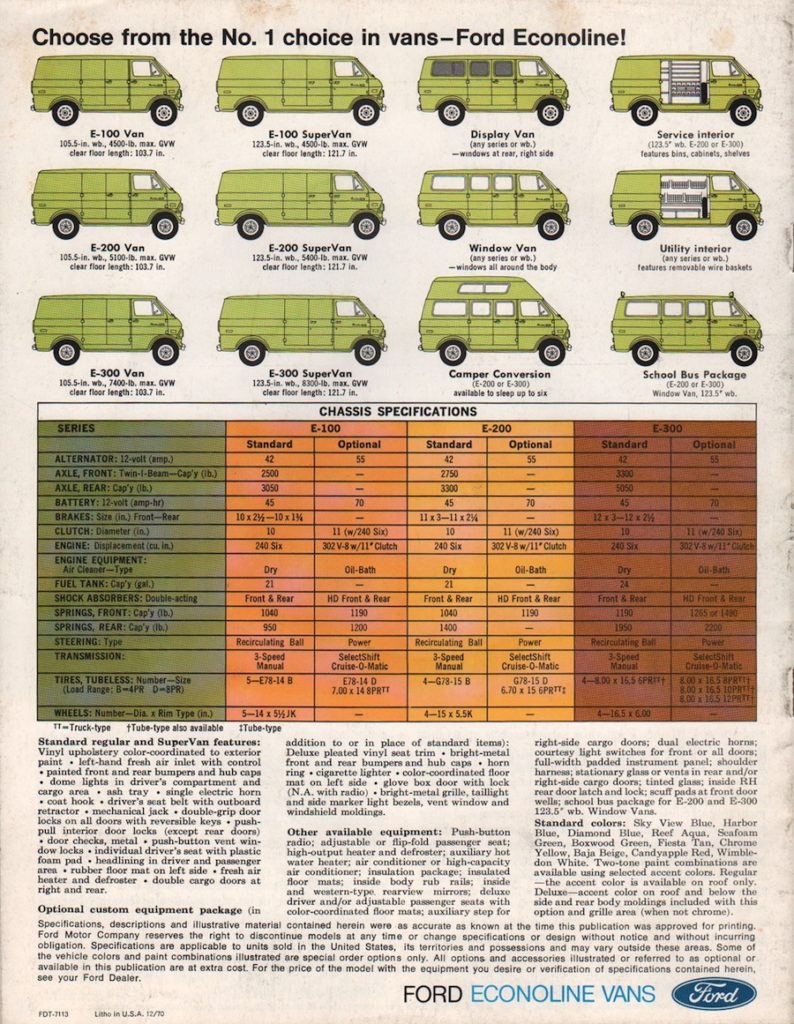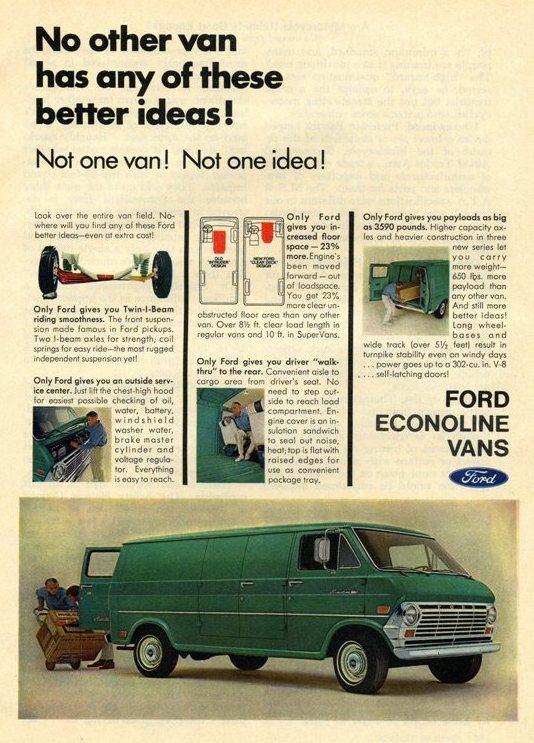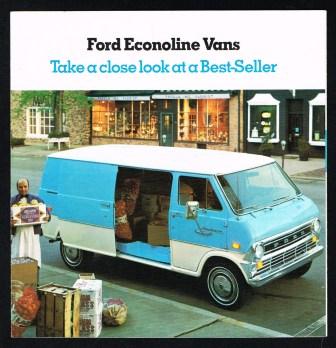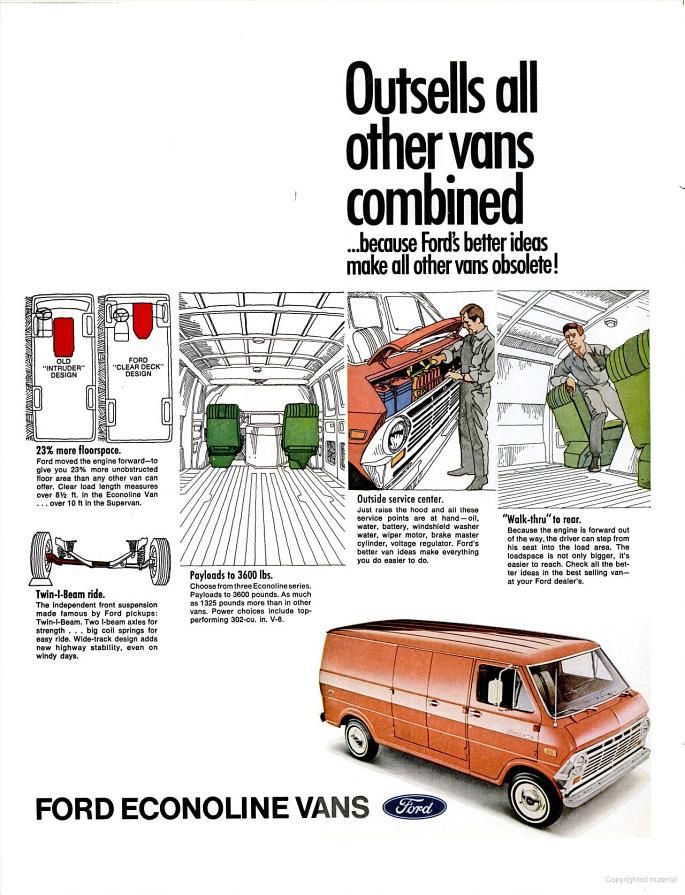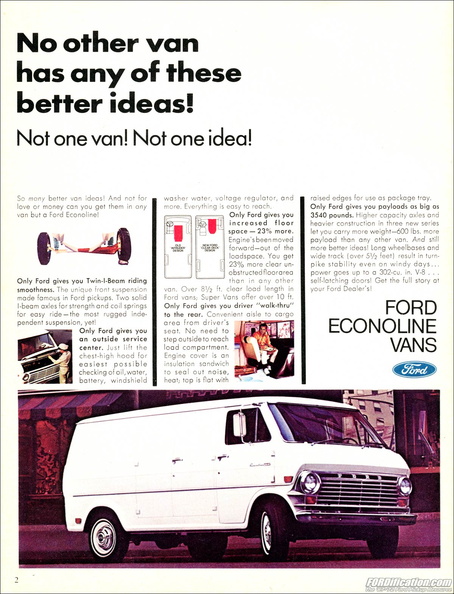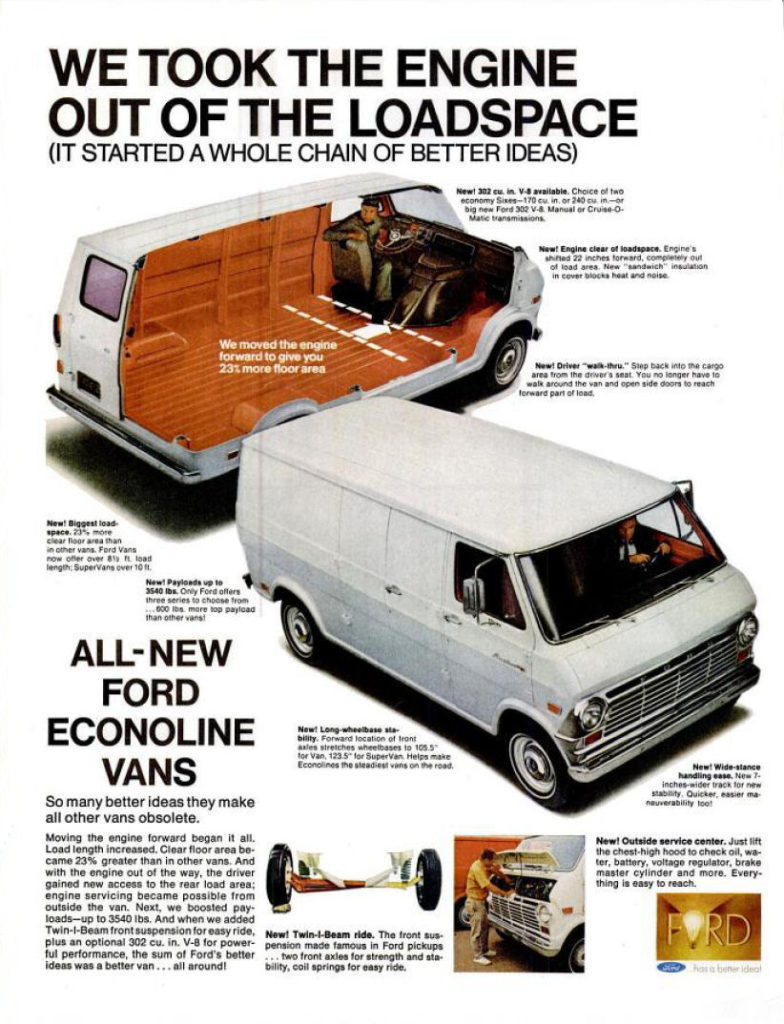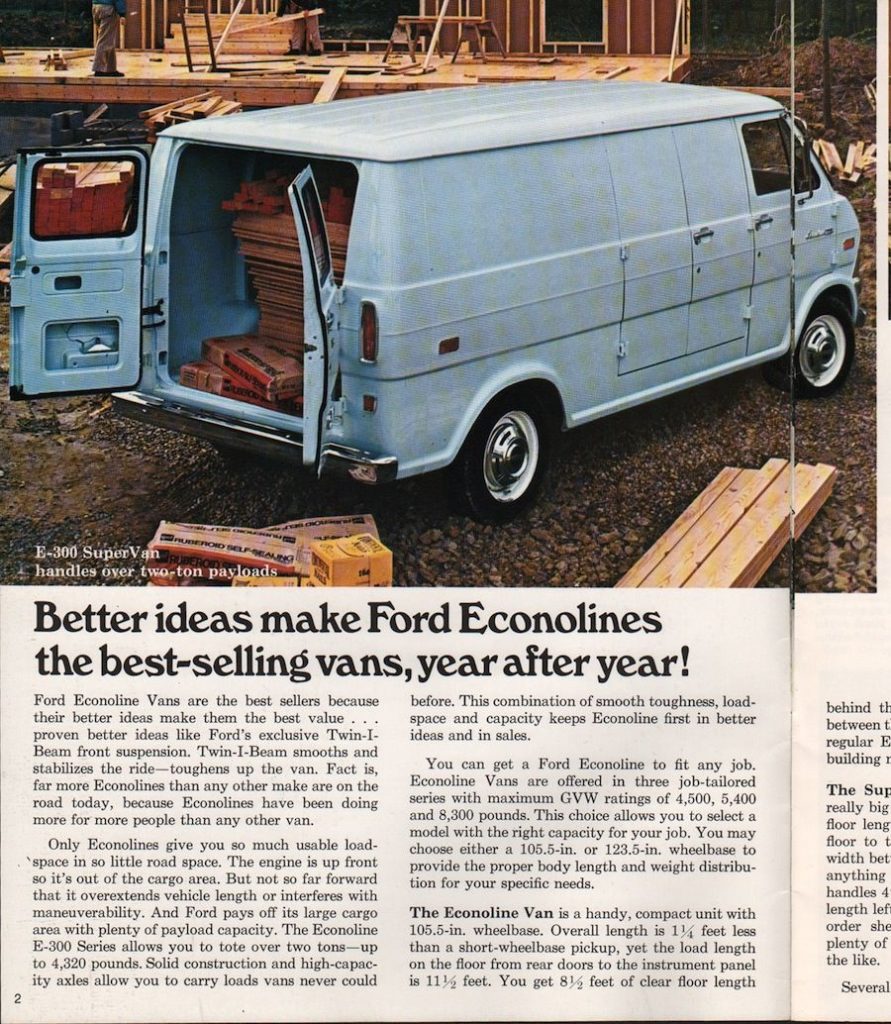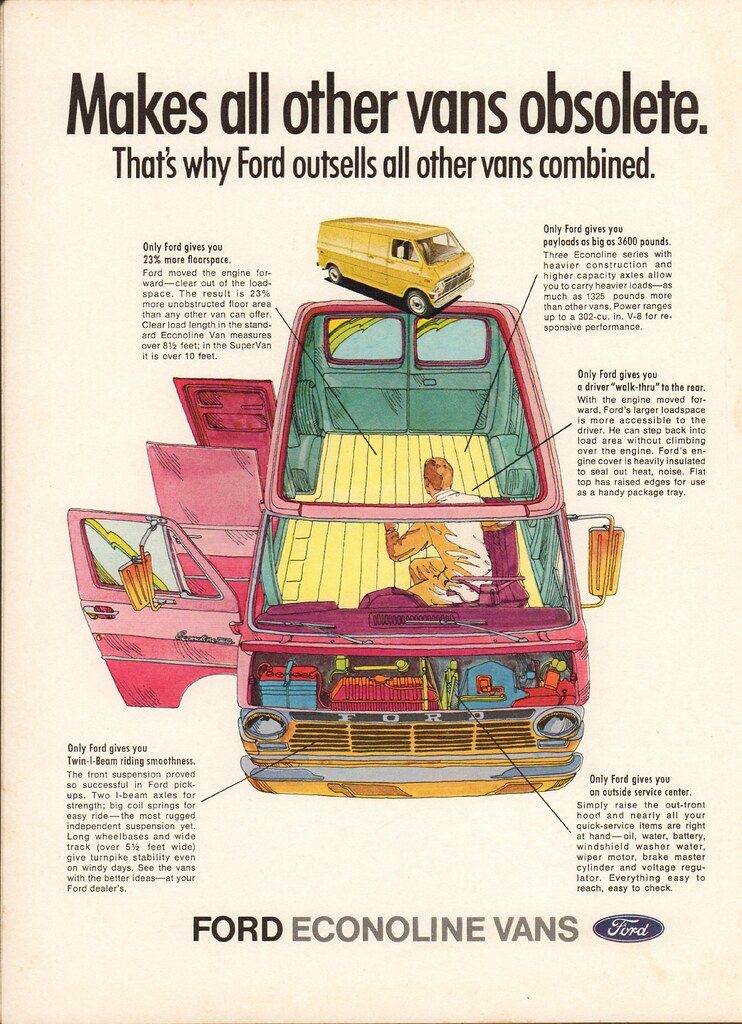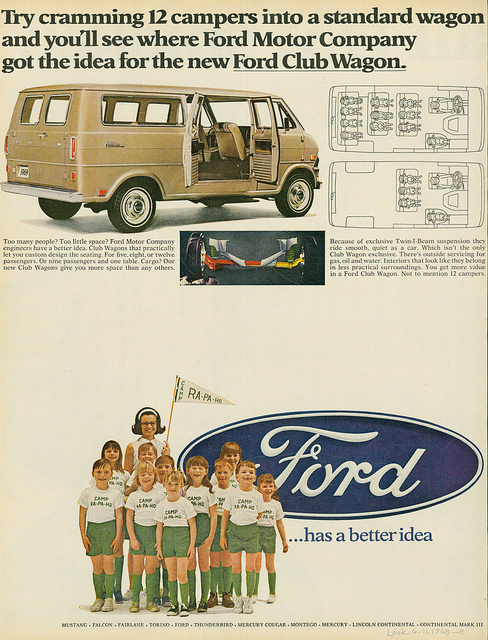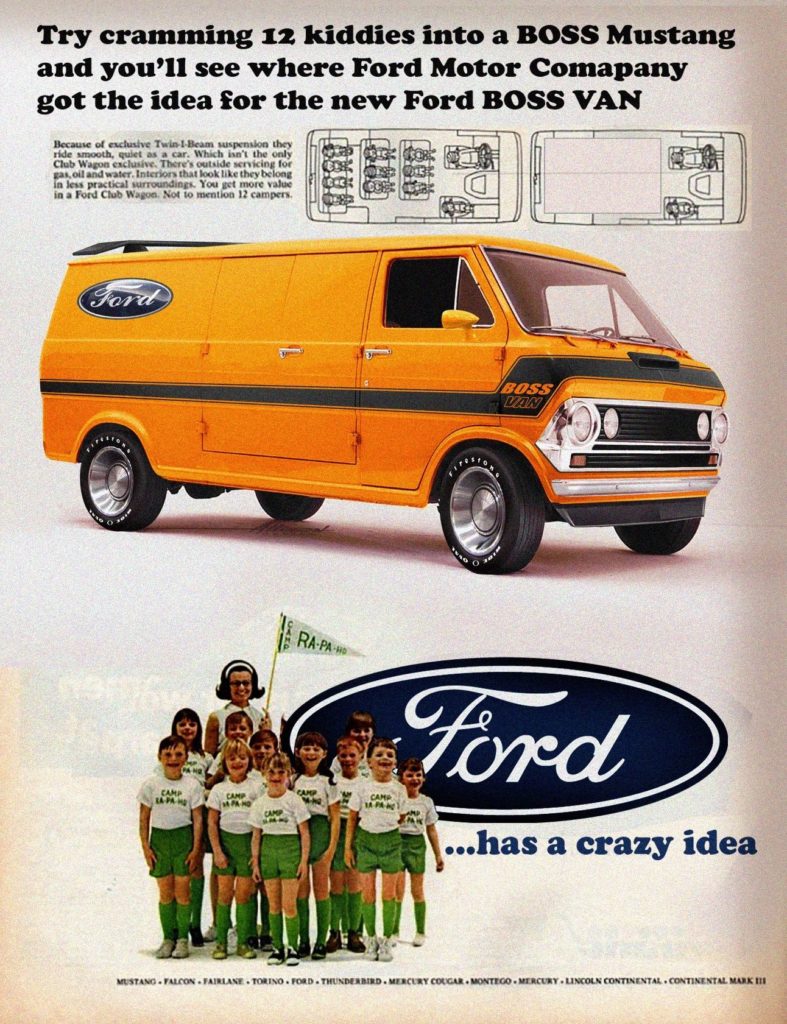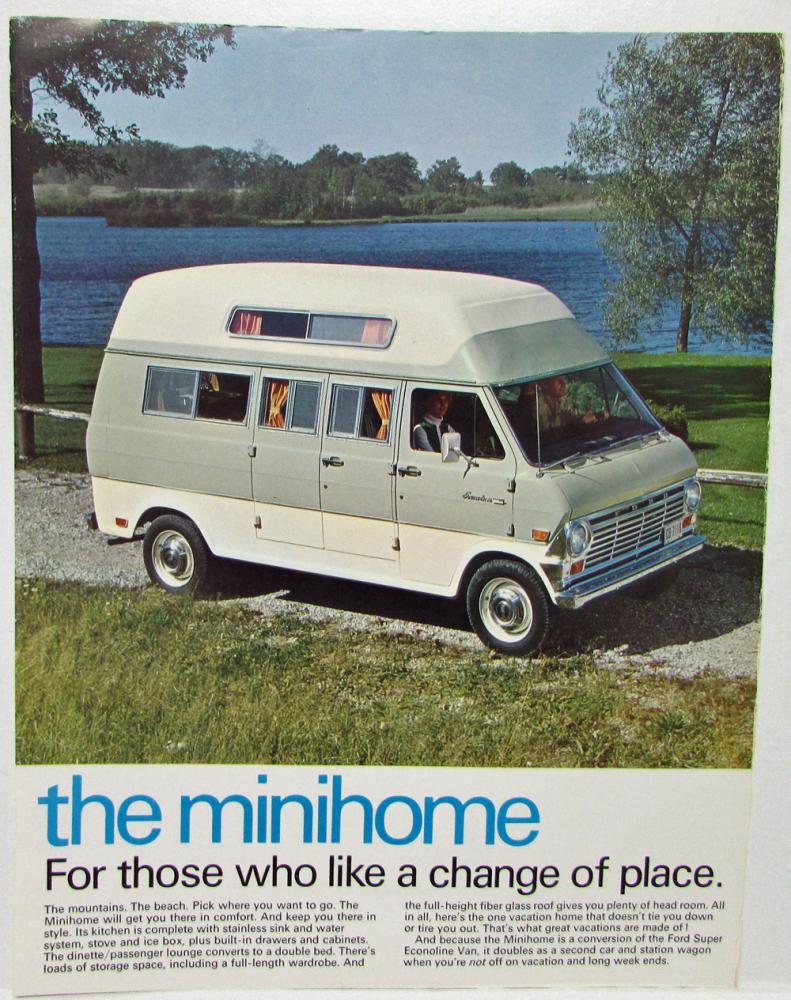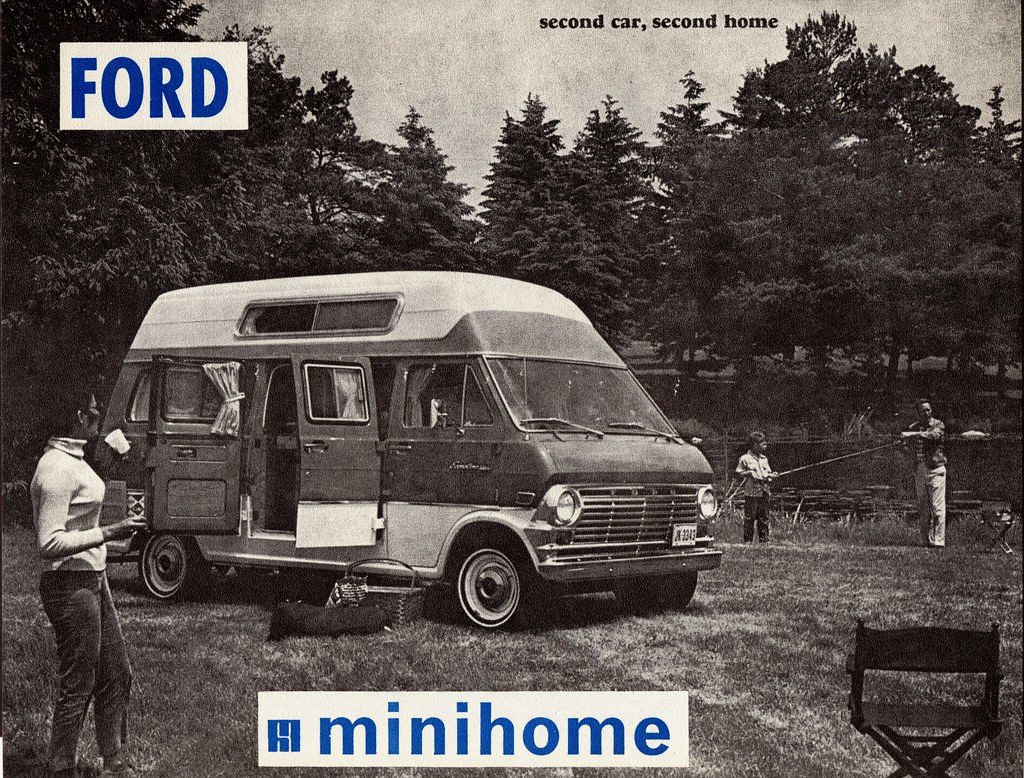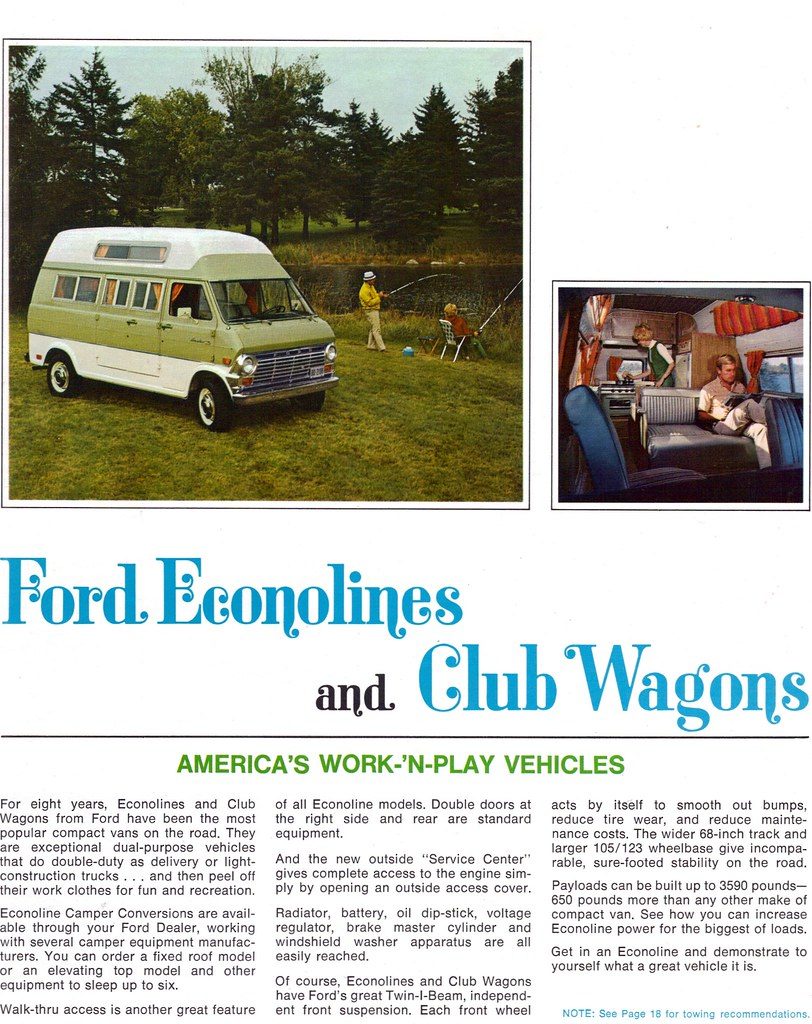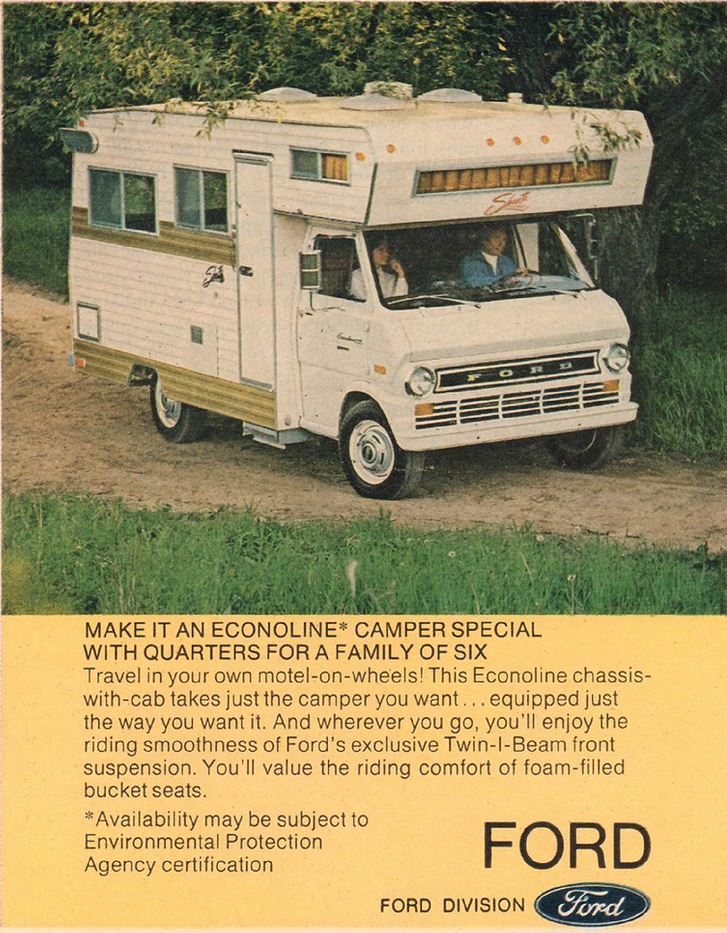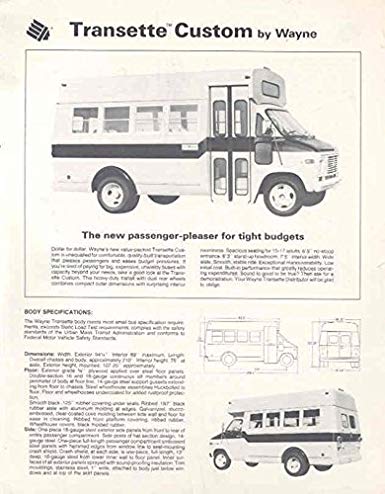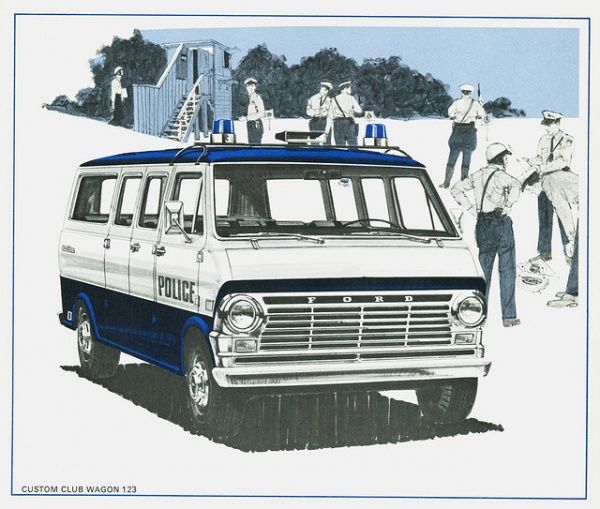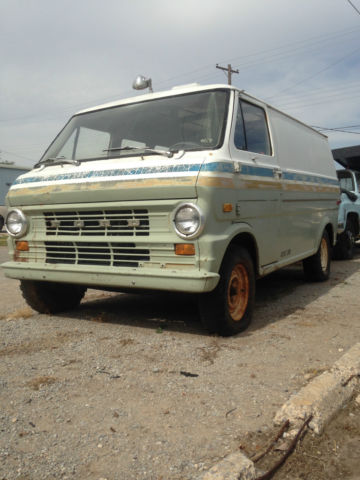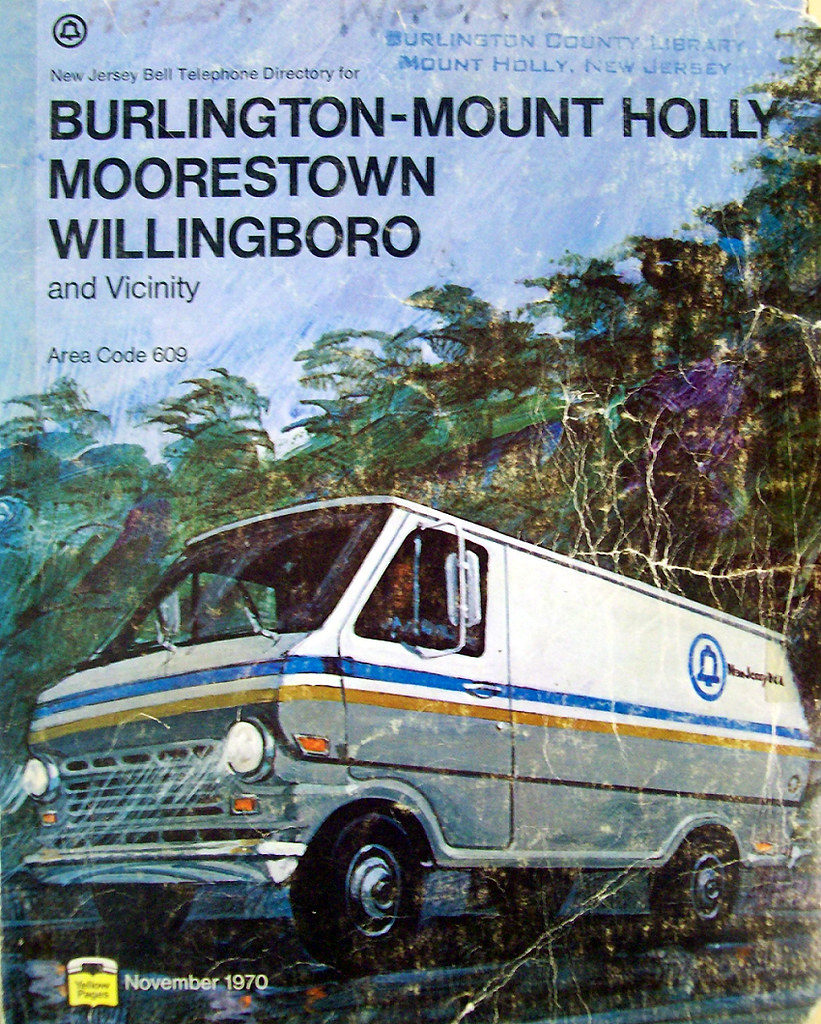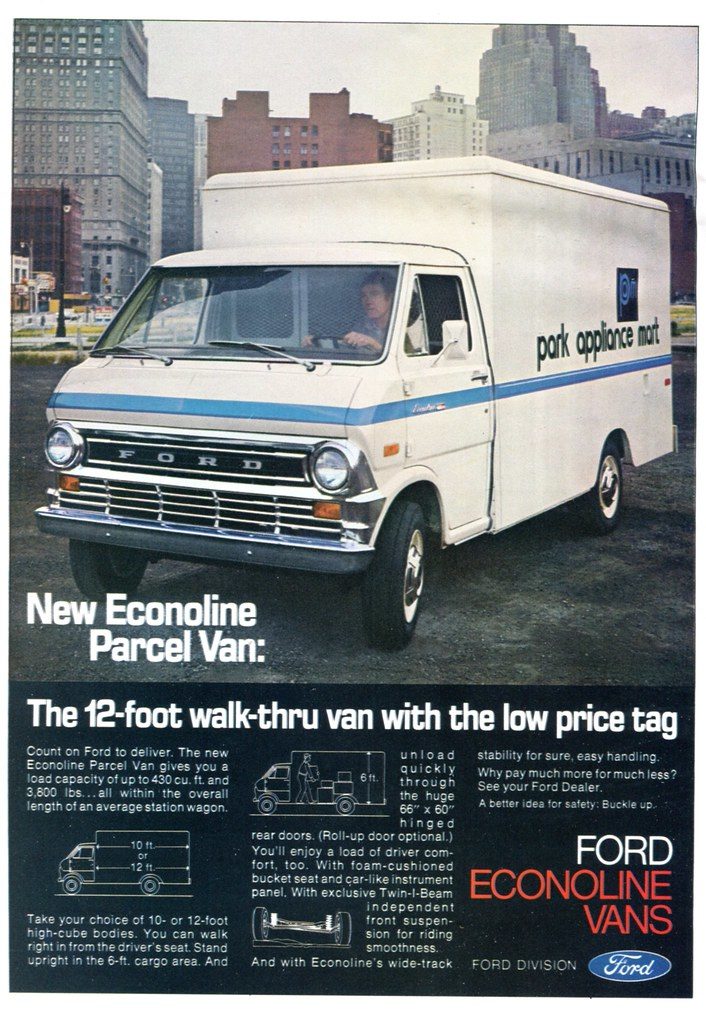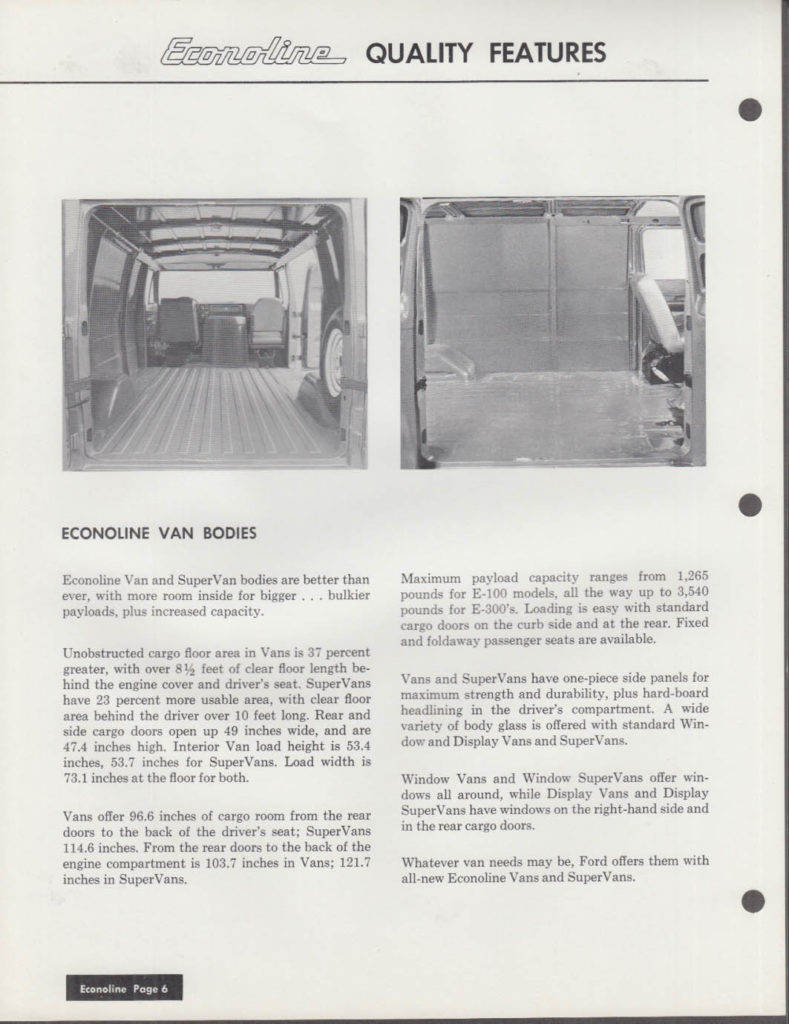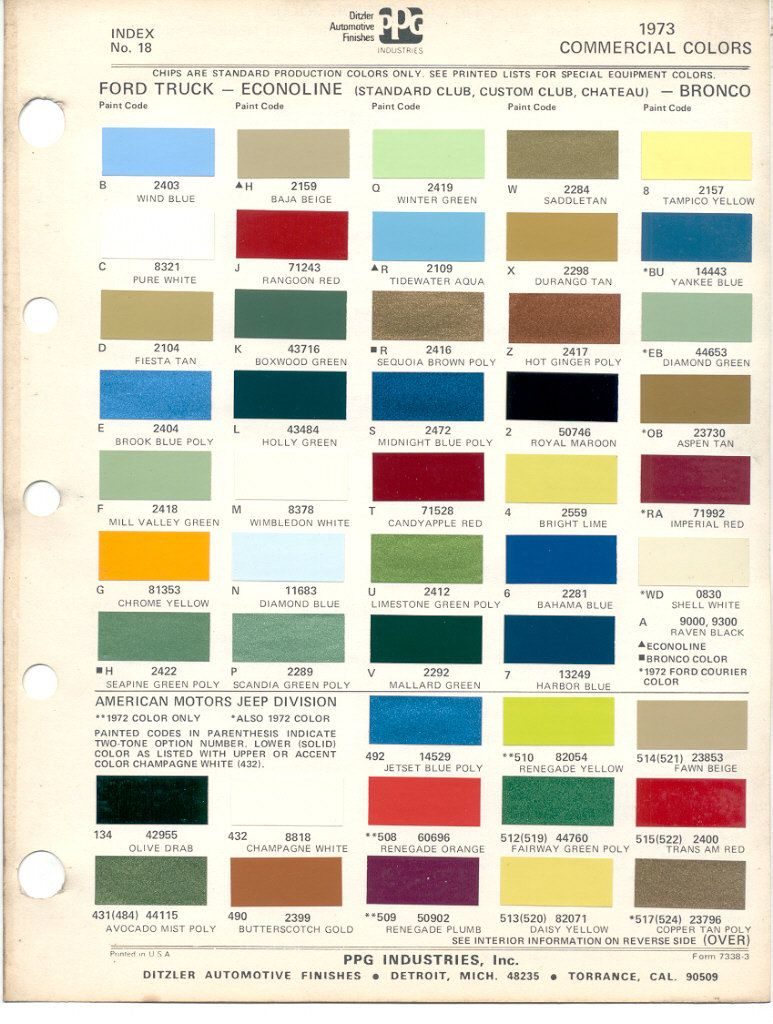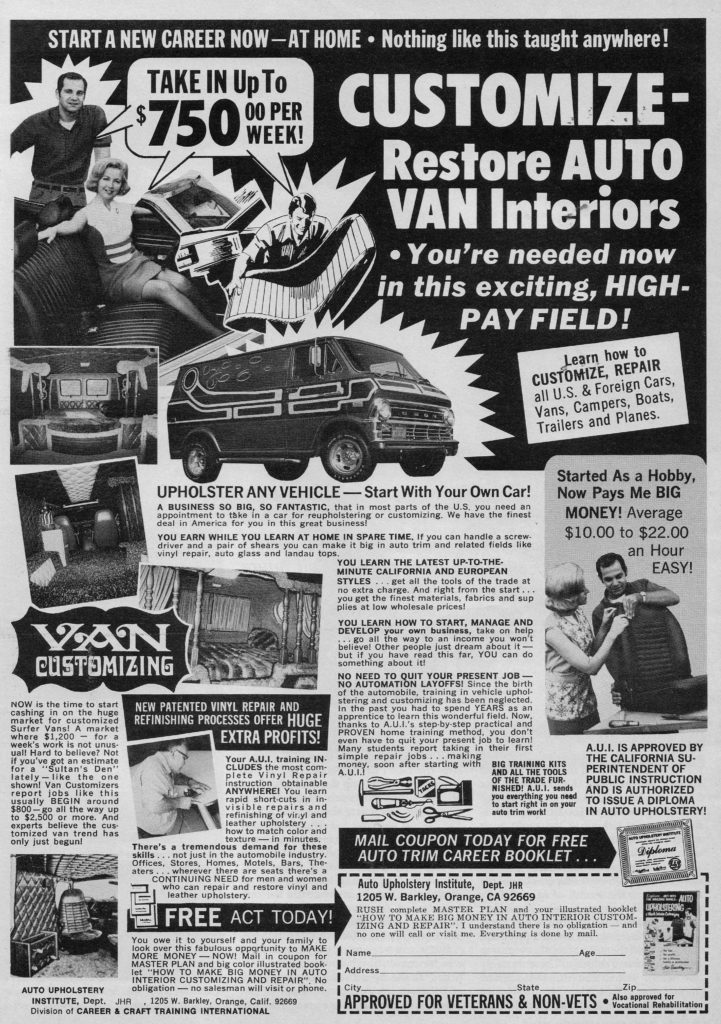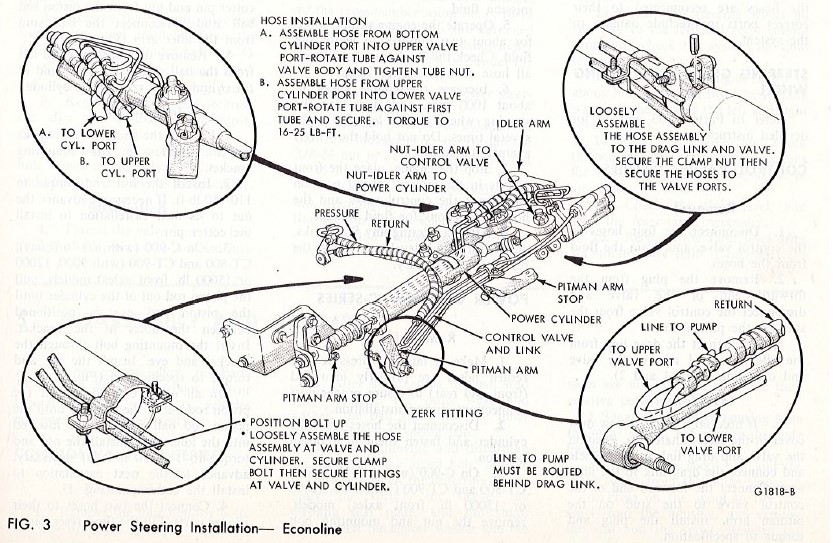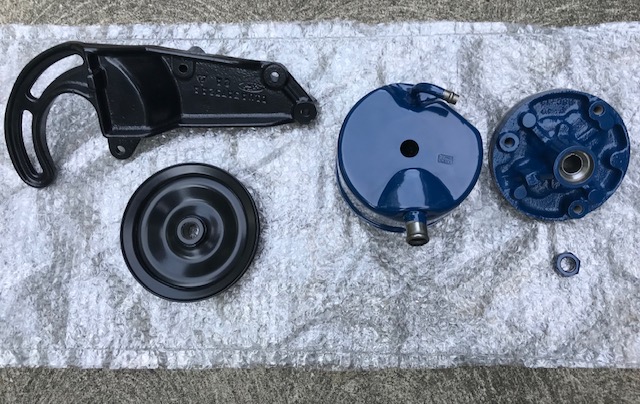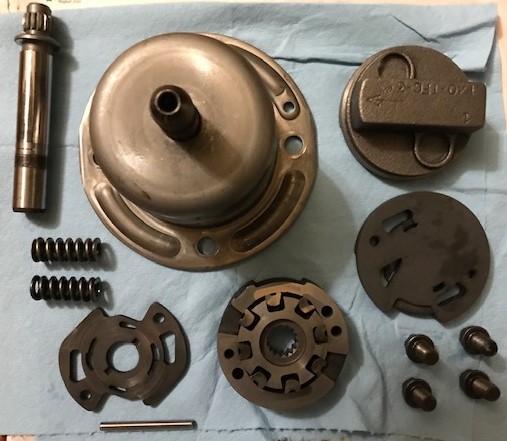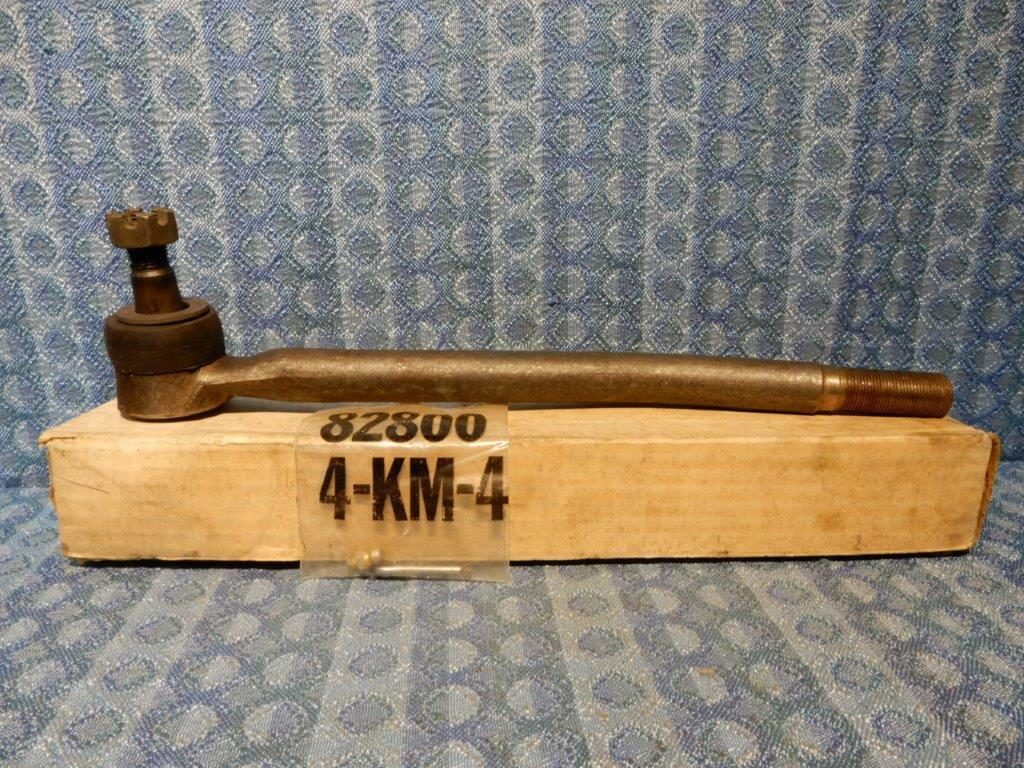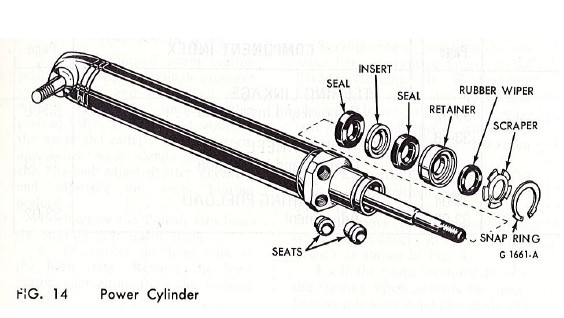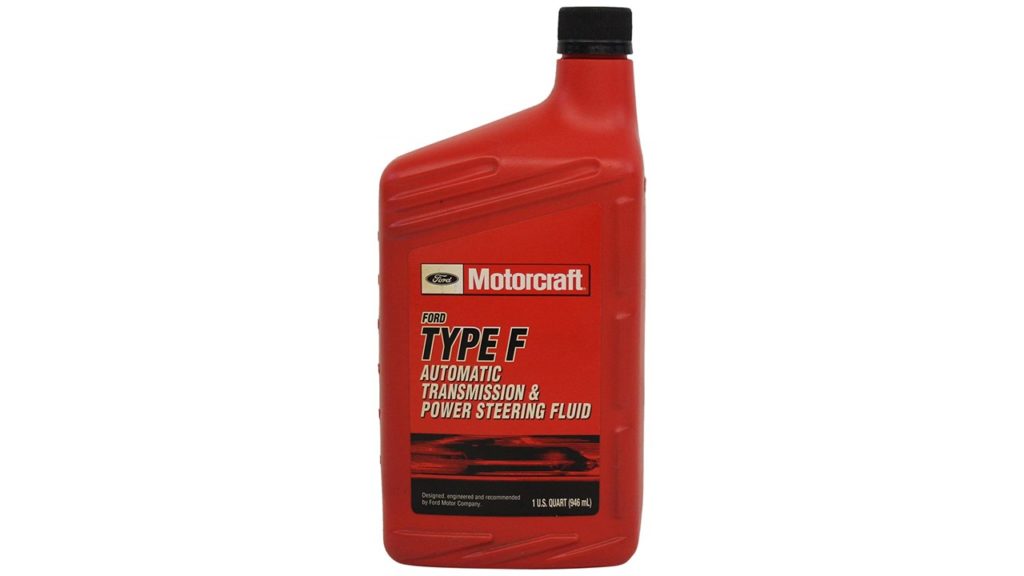Let’s have a look at Econoline power steering…
Power steering for the second generation (1968–1974) Ford Econoline vans is a complex system comprised of three major components:
- The power steering pump (built by Ford or Thompson)
- The control valve (or controller) with linkage (drag link)
- The assist cylinder (or power cylinder, or ram)
Similar systems (with some of the same parts) were used in a number of 1970s era Ford automobiles (e.g., the Ford Cougar, Fairlane, and Mustang).
The power steering unit joins to the steering wheel and the steering linkages via a few key connections:
- The pitman arm (connected to the control valve linkage) that is attached to the steering gear (which is also attached to the chassis and to the steering wheel via the flex coupling)
- The pitman arm stop (connected to the assist cylinder) that is attached to the chassis
- The idler arm/tie rod assembly (connected to the control valve, and the assist cylinder) that is attached to the idler arm and chassis
- The pump bracket (connected to the pump) that is attached to the engine block (the pump pulley also attaches to the engine fan and crank shaft via a fan belt)
All of these components are linked via a network of lines (hoses) and port connections:
- The pressure and return lines that connect the pump to the control valve
- The power steering pump fluid (actually Ford type-F automatic transmission fluid) fill lines that connect the pump to the external fill reservoir
- The two cylinder line hoses (right- and left-turn pressure lines) that connect the control valve to the assist cylinder
The unit (pump excluded) looks like this:
… or like this when removed in the wild:
The drag link can be seen below, and this rare part is available here or the seal (with castle bolt) is available here.
Each of the three above mentioned major power steering components are wonderful mechanical devises of their own right.
The power steering pump
The power steering control valve
The power steering assist cylinder
Because of their mechanical nature, these parts can each be refurbished using rebuild/seal kits. These kits are available online via after-market manufacturers such as Edelmann:
Similarly, after-market lines are also available from suppliers like Edelmann:
There are also a number of informative videos on YouTube that are helpful in guiding DIYers through these sorts of refurbishing efforts for Econoline (and other Ford model) power steering (videos are ordered with those that are ‘to-the-point’ being listed first):
Additional websites related to Econoline/Ford power steering systems that are helpful include:
The refurbished unit looks good as new….
As mentioned above, make sure that you are using Ford Type-F automatic transmission fluid in your second generation Econoline power steering system rather than generic brands of power steering fluid, which can cause problems related to wear, overheating, etc…
Happy Econolining!
